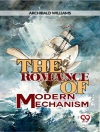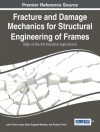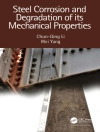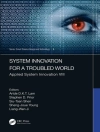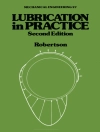This book presents a unique approach for studying mechanisms and machines with drawings that were depicted unclearly in ancient Chinese books.
The historical, cultural and technical backgrounds of the mechanisms are explained, and various mechanisms described and illustrated in ancient books are introduced. By utilizing the idea for the conceptual design of modern mechanisms, all feasible designs of ancient mechanisms with uncertain members and joints that meet the technical standards of the subjects’ time periods are synthesized systematically. Ancient Chinese crossbows (the original crossbow and repeating crossbows), textile mechanisms (silk-reeling mechanism, spinning mechanisms, and looms), and many other artisan’s tool mechanisms are used as illustrated examples. Such an approach provides a logical method for the reconstruction designs of ancient mechanisms with uncertain structures. It also provides an innovative direction for researchers to further identify the original structures of mechanisms and machines with drawings in ancient literature.
This book can be used as a textbook and/or supplemental reading material for courses related to history of ancient (Chinese) machinery and creative mechanism design for senior and graduate students.
Daftar Isi
Preface.- Books.- 2.1 Nong Shu《農書》by Wang Zhen (王禎) (AD 1313).- 2.1.1 Contents.- 2.1.2 Contents.- 1 Introduction.- 2 Mechanisms with Illustrations in Ancient Historical Background.- 2.2 Wu Bei Zhi《武備志》by Mao Yuan-yi (茅元儀) (AD 1621).- 2.2.1 Contents.- 2.2.2 Historical Background.- 2.3 Tian Gong Kai Wu《天工開物》by Song Ying-xing (宋應星) (AD 1637).- 2.3.1 Contents.- 2.3.2 Historical Background.- 2.4 Nong Zheng Quan Shu《農政全書》by Xu Guang-qi (徐光啟) (AD 1639).- 2.4.1 Contents.- 2.4.2 Historical Background.- 2.5 Qin Ding Shou Shi Tong Kao《欽定授時通考》by Ortai, et al (鄂爾泰) (AD 1742).- 2.5.1 Contents.- 2.5.2 Historical Background.- 3 Mechanisms and Machines.- 3.1 Basic Definitions.- 3.2 Mechanical Members.- 3.3 Joints.- 3.4 Representation of Joints.- 3.5 Mechanism Sketch.- 3.6 Mechanisms and Generalized Kinematic Chains.- 3.7 Constrained Motion.- 3.7.1 Planar mechanisms.- 3.7.2 Spatial mechanisms.- 3.8 Summary.- 4 Ancient Chinese Machinery.- 4.1 Historical Development.- 4.2 Linkage Mechanisms.- 4.3 Cam Mechanisms.- 4.4 Gear Mechanisms.- 4.5 Rope Drives.- 4.6 Chain Drives.- 4.7 Summary.- 5 Reconstruction Design Methodology.- 5.1 Classification of Ancient Mechanisms with Illustrations.- 5.2 Reconstruction Design Methodology.- 5.3 Examples of Reconstruction Designs.- 5.3.1 Example 1 – Shui Long (水礱, a water-driven mill).- 5.3.2 Example 2 – Tie Nian Cao (鐵碾槽, an iron roller).- 5.3.3 Example 3 – Yang Shan (颶扇, a winnowing device).- 5.4 Summary.- 6 Roller Devices.- 6.1 Soil Preparation Devices.- 6.2 Harvest and Transportation Devices.- 6.3 Grain Processing Devices.- 6.4 Water Lifting Devices.- 6.5 War Weapons.- 6.6 Other Devices.- 6.7 Summary.- 7 Linkage Mechanisms.- 7.1 Levers.- 7.2 Pumping Tubes.- 7.3 Grain Processing Devices.- 7.4 Other Devices.- 7.5 Summary.- 8 Gear and Cam Mechanisms.- 8.1 Agricultural Devices with Gears.- 8.2 Water Lifting Devices with Gears.- 8.3 Cam Mechanisms.- 8.4 Summary.- 9 Flexible Connecting Mechanisms.- 9.1 Grain Processing Devices.- 9.2 Water Lifting Devices.- 9.3 Handiwork Devices.- 9.4 Textile Devices.- 9.5 Summary.- 10 Crossbows.- 10.1 Historical Development.- 10.2 Structural Analysis.- 10.3 Original Crossbow.- 10.4 Chu State Repeating Crossbow.- 10.5 Zhuge Repeating Crossbow.- 10.5.1 With Movable Magazine.- 10.5.2 foot-operated silk-reeling mechanism).- 11.2 Fang Che (紡車, a spinning device).- 11.2.1 Jia Ta With Fixed Magazine.- 10.6 Summary.- 11 Complex Textile Devices.- 11.1 Shao Che (繅車, a Fang Che (腳踏紡車, a foot-operated spinning device).- 11.2.2 Pi Dai Chuan Dong Fang Che (皮帶傳動紡車, belt drive spinning devices).- 11.3 Xie Zhi Ji (斜織機, a foot-operated slanting loom).- 11.4 Ti Hua Ji (提花機, a drawloom for pattern-weaving).- 11.5 Summary.- References.- Symbols.- Index.


